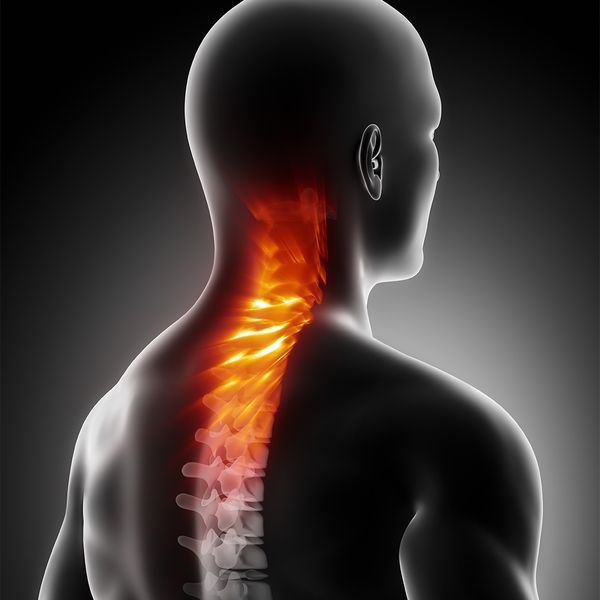Compression Fracture / Spondylolisthesis
COMPRESSION FRACTURE TREATMENT IN BRICK TOWNSHIP, NJ
Helping People Relieve Their Pain Related To Their Spine and Return Them to a Higher Quality of Life
Compression Fracture / Spondylolisthesis
This is one of the most painful of back pain conditions that exist. Most people don’t realize that with a simple procedure that takes approximately six minutes to perform can eliminate the back pain before the patient leaves The Doctor’s office. The alternative to the procedure is taking pain killers and waiting months for the back to heal on it’s own. Dr. Jasper has been performing Kyphoplasty for almost 20 years with very close to 100% success rate. The way the Kyphoplasty works: A broken bone when allowed to move causes severe pain because of the crunching of the bone. With Kyphoplasty an epoxy/cement will fill the cracks of the fractures and within minutes the material hardens which will stop the bone movement hence the pain goes away. If you’ve been diagnosed with a compression fracture or have severe back pain, please call us for an appointment.

Spondylolisthesis
The spine condition, spondylolisthesis, is a result of one of the vertebrae in your spinal columns slipping out of place or alignment onto the vertebra below it. The word spondylolisthesis comes from the Greek words spondylos, meaning “spine or vertebra, “ and listhesis, meaning “to slip or slide.” If the vertebra slips too far, it could press on a spinal nerve and cause low back pain, numbness or weakness in one or both legs. In rare cases, it may even lead to losing control over your bladder or bowel. If this severe condition happens your should seek medical attention immediately.
What Causes Spondylolisthesis?
The spine is made of vertebrae and each one is joined together by small joints called facets, which lines up the vertebrae and allows you to bend, twist and turn. Spondylolisthesis is caused when one or more of these facet joints become degenerative, weak or fractures allowing for the vertebrae to move or slip to some degree. Main causes of spondylolisthesis are:
- A defective facet joint you have had since birth (congenital)
- A facet joint damaged by trauma or and accident
- A stress fracture from overuse of the facet joint
- An arthritic facet joint or an infection
This condition can affect children and teens that are involved in high impact sports such as gymnastics, weightlifting and football. The high impact and overuse of the backbones and facet joints can cause stress fractures in the vertebrae and can result in spondylolisthesis. Older adults can develop spondylolisthesis because of wear and tear from physically demanding work that leads to fractures. The condition can also occur without fractures because of weakening of the ligaments that connect the vertebrae thus allowing for slippage. Spondylolisthesis are graded according to how much one vertebra slips compared to the adjacent vertebra:
- Grade I – Less than 25 percent
- Grade II – Between 25 and 50 percent
- Grade III – Between 50 and 75 percent
- Grade IV – More than 75 percent
- Grade V – Spondyloptosis occurs when the vertebra has completely fallen off the next vertebra.
What are the Symptoms of Spondylolisthesis?
Spondylolisthesis can be present to some degree and the patient never has any symptoms at all. The most common symptoms of spondylolisthesis are:
- Pain traveling from the low back down on or both legs
- Numbness or weakness in one or both legs
- Walking difficulty
- Back or buttock pain, that gets worse with bending over or twisting
- Loss of bowel or bladder control
Diagnosis and Treatment of Spondylolisthesis
Spondylolisthesis is diagnosed usually by a spine or pain interventional related physician. X-rays of your back can show slippage and or fractures of the vertebrae. Also, a MRI and CT scan can pinpoint the damage and help determine the degree of spondylolisthesis and better guide the treatment plan.
Most treatment plans start with discontinuing any physical activity that may have caused the condition to happen. Anti-inflammatory medicines such as ibuprofen (Advil) or naproxen (Aleve) are prescribed in order to reduce the inflammation and pain. Physical therapy is also very important to strengthen the core abdominal and low back muscles to provide stability and reduce further damage. When obesity or overweight is the cause of the spondylolisthesis weight loss may be very helpful.
When pain becomes unbearable and the degree of slippage continues, or if there is compression on the spinal nerves related to the spondylolisthesis, surgery can be helpful. Endoscopic procedures can and should be considered in some cases to decompress the facet joints, and central areas of the lamina bones to relieve pressure on the spinal nerves. The patient benefits of endoscopic surgery are:
- Conscious sedation
- ¼ inch incision
- Minimal recovery time
- Return to work sooner than minimally invasive or traditional spine surgery
When Endoscopic surgery is not indicated and the condition is worsening traditional laminectomy is used to decompress and in some cases a fusion can be helpful to stabilize the facet joint and vertebrae. After surgery you may need to wear a back brace for a while to help with recovery and to minimize and weight bearing activity. Rehabilitation therapy will be necessary in order to build strength in your core abdominal and back muscles as well.
The Jasper Spine Institute Interventional Pain Management Advantage:
- Less than ¼ inch incision
- Less post-operative pain and recovery than traditional minimally invasive procedures
- Outpatient procedure with patients discharged within 2 hours of surgery
- Return to work within 3-5 days*
At Jasper Spine Institute we listen and work with you to develop a unique treatment regime that addresses your pain and symptoms. Our goal is always to provide solutions whether conservative or surgical so that you are able to return to the quality of life you want without the pain and suffering.
* Always seek your physician’s opinion when it is safe to return to work. Also, light administrative duty is recommended until your physician approves of any physical demands at your place of work.
Contact Us Today
74 Brick Blvd. Brick, NJ 08723
Please take a moment to tell us a little about yourself and your needs. A member from Jasper Spine Institute will contact you as soon as possible. If your needs are urgent please contact us by phone at (732) 262-0700.
